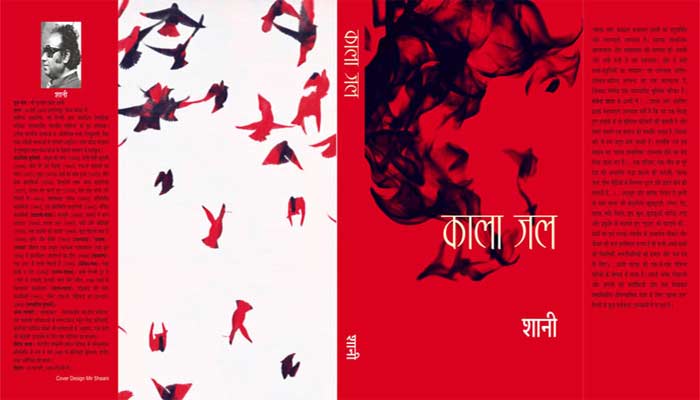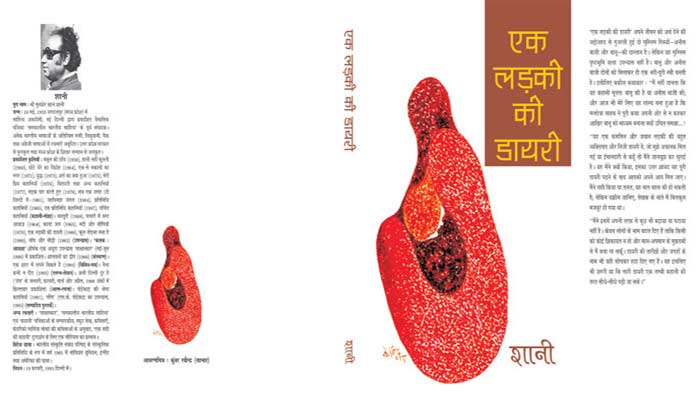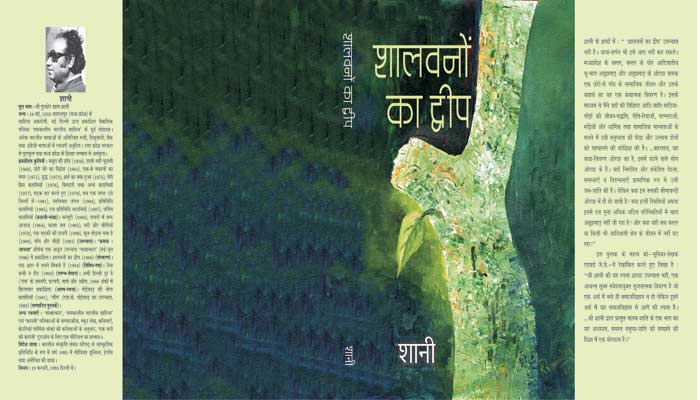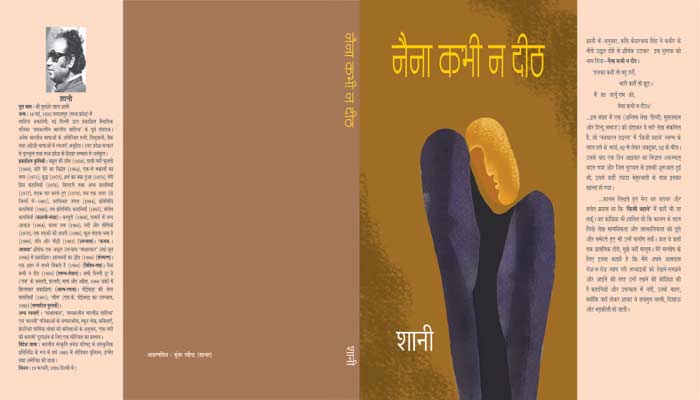Kala Jal (Dark Waters)
Kala Jal (Dark Waters) is the first authentic saga of that significant segment of the Indian society- the Indian Muslims. For centuries, the Indian Muslims have been portrayed as rulers, nawabs, courtiers and the cultured aristocracy. Shaani’s novel portrays them as they were, familiar, vulnerable people with their personal and social struggle, their humble triumphs and humiliating tragedies, their little joys and enormous sorrows, their passions but a collective identity.
Shaani brings a unique understanding sympathy to his characters and their milieu. Seldom does he indulge in sentimentalism or self pity but presides over the narration with a wry compassion and an almost totally neutral control. What results is not a partisan, sociological study of the plight of Muslims in India but a vivid , moving portrayal of the human condition in any corner of the earth.
But it would be a misstatement to call Dark Waters a Muslim novel. It is essentially an Indian novel for it is the story of numerous individuals belonging to two families that exist only in the Indian ethos. But perhaps to call it only an Indian novel would also be an error. The story of the crumbling and disintegration of the three generations could be a story from any part of the world.
Saanp aur Seedhi (Snake and Staircase)
Snake and Staircase’ is a novel written on the backdrop of a socio-economic landscape changing rapidly after independence. Its story begins with reference from around 1948-49. This is the time when new innovations of development were being started. These experiments were being done by ignoring the people’s basic requirements. The biggest nuisance of this so-called development is the urbanization of the village.Not only the upper structure of the village but the traditional profession was also wiped out. Local culture and public life have been affected.
Shani writes in the preface of the novel: “The story of the novel is either a story of transition or story of those people of a small village who have been affected by the transition. This village is called Kasturi,a small in Bastar area of Chhattisgarh.”
Ek Ladki ki Diary (Diary of a girl)
Diary of a girl is the story of life in a hamlet which is experiencing the onslaught of rapid urbanisation. Its social mores are still rural but city life is making quick inroads and slowly overpowering the character of the hamlet. People have started taking interest in others’ life to such an extent that life in the hamlet itself becomes very uninteresting.
Diary of a girl portrays the story of two women and their struggle to give some meaning to their lives. Banu and Anees Baji are products of Muslim society and its way of life but the novel is not set in the Muslim culture. Banu and Anees Baji don’t deal with the profound issues emerging out of complex universe of social and political spectrum. Their struggle is within and they keep confronting their personal situations and end up getting hurt. But the journey goes on.
The novelist has hinted towards one of the situations through a character Mr Malhotra, “does it not happen that yesterday in a particular value we put all our faith, honesty and allegiance and today becomes greatest deception due to circumstances? Is it not that our decisiveness is actually a kind of indecision….” We will find that Banu, Anees Baji, Mona and all the other main characters of the novel keep revolving around the same dilemma.
The romantic premise of the new story has huge impact on this novel. Those inner conditions that have been used as pretext for creation could have been expressed only in the space of romance. It’s due to romance that Banu and Anees baji could better understand their strangeness and to some extent be involved in it. The voice trapped within the stones that Banu alone can hear can be heard by us readers too and that makes the writing worthwhile.
Nadi Aur Seepiyan
In the novel “Nadi Aur Seepiyan”, writer Shaani explores man-woman relationship in general, and husband-wife relationship in particular. He raises doubts about such relationships which have stagnated in our social order. We can describe this as exploration of the ‘other’ aspect in the orthodox and established meanings of man-woman relationship.
The truth appears to be beyond the periphery within which we are normally habitual of exploring such relationships. More often, we hesitate to face the ‘other’ aspect of this meaning, as we often feel wounded in our self when we either come to know or feel the ‘other’ truth. In fact, the situation of doubt over man-woman relationship indicates towards change in our greater social context. In the narrative, such relationship arising out of the institution of marriage has got prominence, but Shaani takes the wider human relationship from the depth of such relations, and brings them into the realm of doubt.
Viewing the present framework of such relationships in this narrative, our mind focuses on the gradual erosion of the institutions of family and marriage in the context of new global development. Such erosions are gradually getting social recognition and today it has been named as New Morality. The novelist tries to portray how so-called orthodox morality limits the free sky of conjugal relations and makes them the target of different forms of inhibitions. The novel reflects the dichotomy between orthodox and new morality through the relationships between Swarna and Hemant, and Swarna and Rajiv.
One emotional dimension of this novel is related to man-human relationship and the other dimension relates to marital relationship. The central female character in this narrative, Swarna, touches both these dimensions. Though the narrative’s main problem relates to interference of inhibitions in relationship, yet its appeal appears to be wide.
Shalvano ka Dweep (An Island of Sal)
An Island of Sal is a factual account in fictional style of the social life of the tribesmen of Orcha, a small village in the Abujhmar Hills in Bastar. The Abujh (Hill) Maria Gonda, who are the aboriginals of the place , have been much romanticised elsewhere, if not ignored. Besides trying to portray the tribal as a man, the Book also focuses upon relevant aspects of a study of the community conducted by an American social-anthropologist Dr.Edward J. Jay, and takes an unsparing look at the reactions of the author himself.
Naina Kabhi Na Theedh
In this collection, all the articles except one,have been compiled, which were published in ‘Isi Bahane’ column in ‘Navbharat Times’, between March, 92 and October, 92. Writing weekly columns has both its advantages and disadvantages. The disadvantage is that you keep looking for topics like a hungry fish constantly looking for food. You are under pressure because of time deadlines but it has also its benefits. As the Nobel Prize-winning Israeli writer Isaac Bachvis Singer has said, a writer is like a horse, it needs constant whipping to make it move. Time-bound or any such pressure at least for the writer like me works the same way for me, otherwise I would not even have done this.
I would like to thank my writer and journalist ‘friends’ and ‘enemies’ who have shown interest in me for such writing. It is not a mere formality to remember brother Gurukripal Sinha and young journalist Anil Shukla in the neighborhood, because they kept encouraging me whenever I was down. Friends like senior writers like Mr. Nemichand Jain, Dr. Namwar Singh, Krishna Baldev Vaid, Krishna Sobati, Ashok Bajpayee, Vijay Mohan Singh, Vishwanath Tripathi and Sudeep Banerjee not only encouraged me with their frank opinions but also helped retaining my self confidence, even for the future. How can I forget famous poet and friend Kedarnath Singh, who has given this book its title.







6 Responses
March 10th, 2021 at 7:49 pm
I really like reading through a post that will make men and women think.
Also, many thanks for allowing for me to comment!
March 29th, 2021 at 5:10 pm
I really liked your blog post.Much thanks again. Will read on…
April 11th, 2021 at 4:19 am
Thank you for your blog article.Really thank you! Awesome.
April 11th, 2021 at 3:21 pm
Thanks again for the blog article.Thanks Again.
April 12th, 2021 at 8:05 pm
I value the post.Really thank you! Awesome.
April 15th, 2021 at 10:33 am
The same as popular music, this content impacted me.
I really desire to congratulate you on the amazing work that you did.
The way you deliver important things is just extraordinary.
Leave a Comment